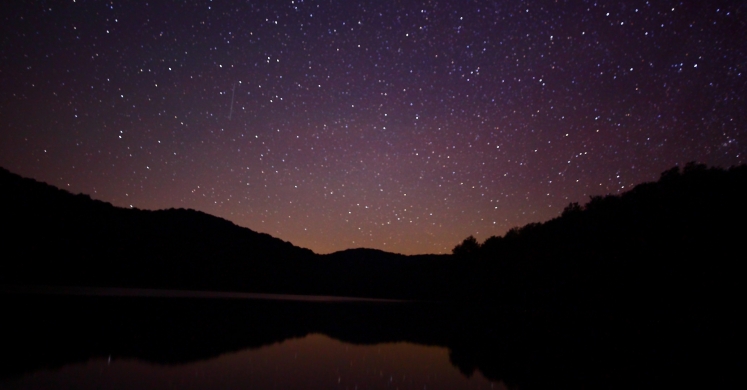Blog

#bioPGH Blog: Orionids Meteor Shower
 A resource of Biophilia: Pittsburgh, #bioPGH is a weekly blog and social media series that aims to encourage both children and adults to reconnect with nature and enjoy what each of our distinctive seasons has to offer.
A resource of Biophilia: Pittsburgh, #bioPGH is a weekly blog and social media series that aims to encourage both children and adults to reconnect with nature and enjoy what each of our distinctive seasons has to offer.
Normally here on the #bioPGH blog, I try to stay with what’s current and in view outside. This week, though, I wanted to give us all a chance to plan ahead! The Orionids meteor shower peaks in October, but if you want to take full advantage of the view, it might just take a bit of planning.
In just a few weeks’ time, the southeastern night sky will give us a glimpse of the trailing bits of dust and ice from Halley’s Comet—the Orionids meteor shower. Though the comet is only visible to those of us without specialized equipment once every 76 years or so (the last view was in 1986), the Orionids are visible nearly every year around October. This year, the Orionids are expected to be in view from early October to early November with peak viewing between October 20-22 —which means plenty of time to find and reserve a good spot to watch them. Granted, this year the moon will be nearly full at that point, which will decrease how many meteors are visible; but you should still be able to see at least 15-20 meteors go by.
In Pennsylvania, a famed sky-watching destination is Cherry Springs State Park in Coudersport. Though it’s a few hours from Pittsburgh, this park is notable for its exceptionally low light pollution, largely because it surrounded by Susquehannock State Forest and smaller, rural communities. In addition, the park converted its outdoor lighting from white to red light to help minimize glare; and most visitors to the park are also interested in astronomy and try to be cognizant of light. Overnight stays at the park’s Astronomy Field require star gazers to register ahead of time, but park visitors can also view the night sky from the Night Sky Viewing area, where you can stay for a few hours at a time. The Orionids in particular tend to peak after midnight, so if you’re interested in making the adventure out there for the show, it would be worth considering the Astronomy Field!
Once you have found a good spot to settle in for the show, the “radiant” of the meteors (or the point where the meteors all seem to come from) will be between the constellations Orion and Gemini. NASA suggests locating Orion’s brightest star, Betelguese, and looking slightly northward. Around peak time for the meteor showers (~midnight), Orion will be near its highest point for the night and will be visible in the southeast. As a side note, NASA also points out that it may take your eyes up to 30 minutes to fully adjust to super low levels of light. The Orionids are a medium brightness show, but that is just all the more reason to think about spending some time out in nature to see them. Enjoy!
Continue the Conversation: Share your nature discoveries with our community by posting to Twitter and Instagram with hashtag #bioPGH, and R.S.V.P. to attend our next Biophilia: Pittsburgh meeting.
Resources
DCNR: Cherry Springs State Park
Photo Credits: Wikimedia User ForestWander CC-BY-SA-3.0 and NASA

